Research
Oleaceae
Oleaceae phylogeny (tribes and subtribes)

With a new phylogeny for Oleaceae, based on cytoplasmic and nuclear information, we showed that the five tribes (Myxopyreae, Fontanesieae, Forthythieae, Jasmineae and Oleeae) are well supported and monophyletic, with Jasmineae clearly sister to Oleeae. We also show that the four Oleeae subtribes (Schreberinae, Ligustrinae, Fraxininae, Oleinae) are well defined.
Phylogeny and biogeography of Notelaea s.l.
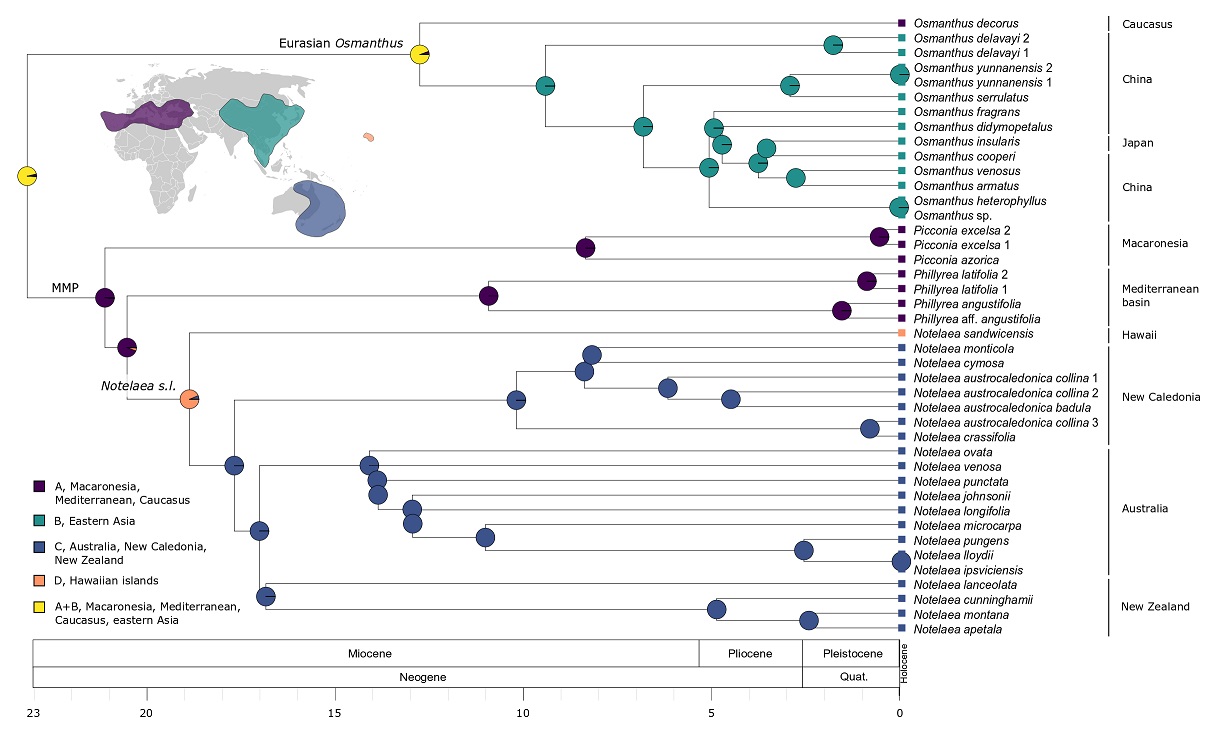
Here we focused on the distinct clade formed by the generic complex Nestegis, Notelaea, Osmanthus, Phillyrea and Picconia in subtribe Oleinae. We used phylogenomic data from plastid and nuclear DNA of an extensive sampling, and the results showed six subclades in this generic complex, which are also geographical segregates found in Australia (Notelaea), Hawaiian Islands (Nestegis sandwicensis), Macaronesia (Phillyrea and Picconia), Mediterranean Region (Phillyrea), New Caledonia (Osmanthus section Notosmanthus) and New Zealand (Nestegis s.s.). Accounting for broad morphological overlaps in this clade, we recognized three genera (Phillyrea, Picconia and Notelaea s.l.), subsuming all Pacific taxa under Notelaea. Molecular dating and biogeographic analyses indicate that this clade originated in Eurasia during the Early Miocene (mean 23.2 Mya). Finally, dispersal (rather than continental vicariance) is probably the main explanation for the global, disjunct distribution of this group, with island-hopping and local extinction as the hallmarks of its evolutionary history.
Phylogeny and biogeography of Schreberinae
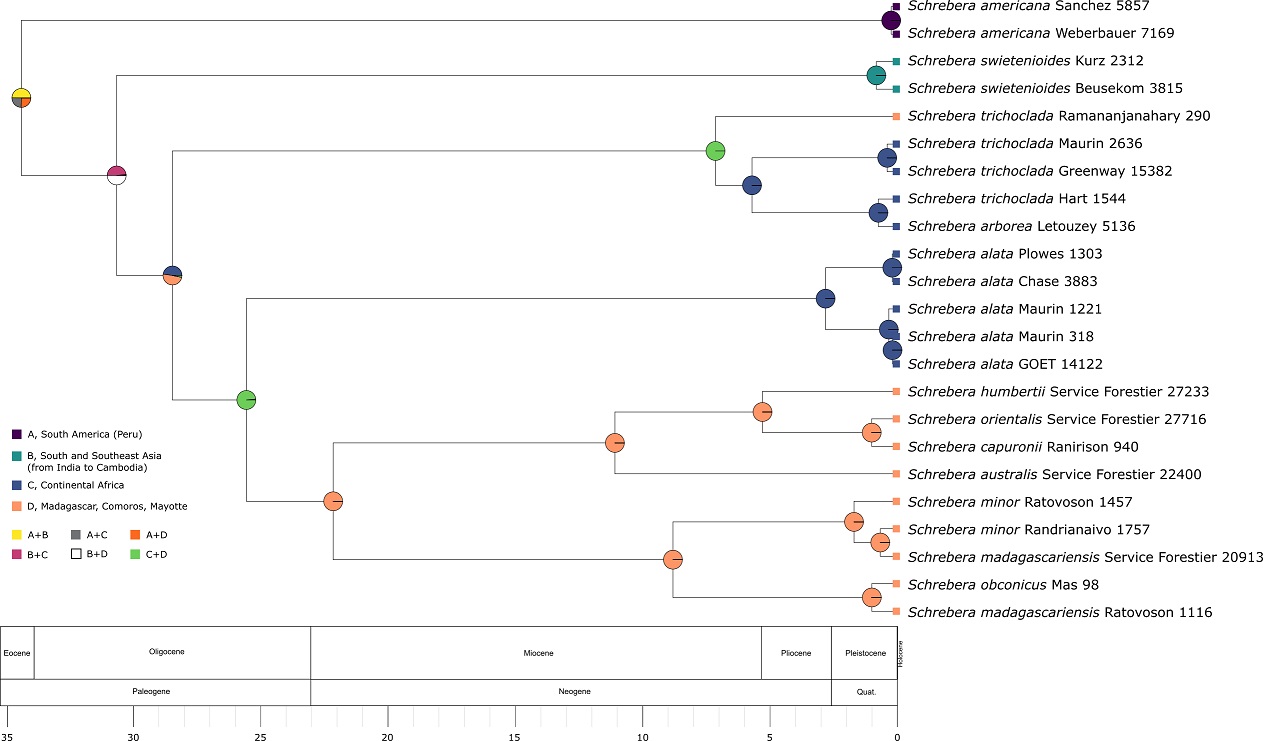
This study of the small and disjunctly-distrubted subtribe Schreberinae,using phylogenomic data from plastid and nuclear DNA, showed paraphyly among its members, with Comoranthus nested within Schrebera, leading us to synonymize these genera. Schrebera s.l. occurs in four major regions of the world, but its center of origin remains uncertain with three possible ancestral ranges identified. However, the diversification of this genus is estimated to have started in the Early Oligocene (ca. 34 Mya). Madagascar is the center of diversity of Schrebera s.l., where ten endemic species, of which five are new, were recovered from analyses of morphological, molecular, and ecoclimatic data. Therefore, a taxonomic treatment of the species from Madagascar and the Comoro Islands was presented. As currently circumscribed, Schrebera s.l., and thus the monotypic subtribe, includes 16 species (one in South America, two in Southeast Asia, three in Africa, of which one is shared with Madagascar, and 11 in Madagascar and the Comoro Islands).
Solanaceae
Solanaceae biogeography
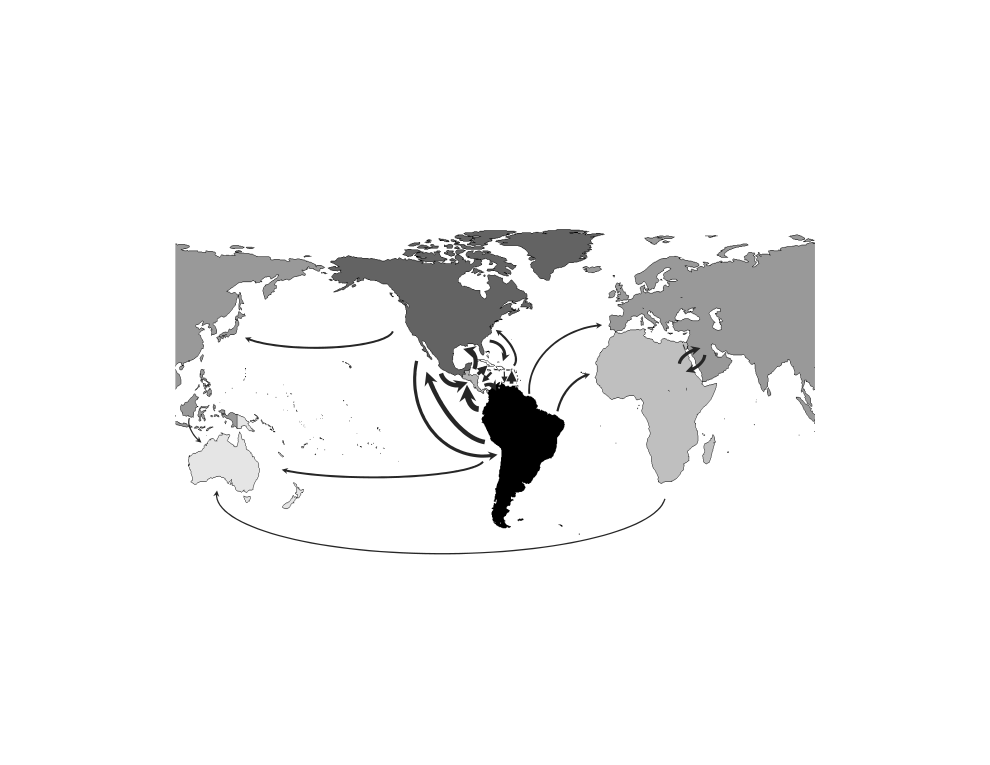
For Solanaceae, we examined how biogeographical events (e.g., vicariance, founder events, and dispersals) in the context of time and space contributed to the widespread distribution of the family. we found that South America is Solanaceae’s current center of diversity and its ancestral range. The main type of biogeographical event that drives the evolution of geographical ranges in the family is dispersal events between areas, and these were most common in range expansions from South America into North and Central America. Dispersals from South America to other areas, in general, were more common than in the opposite direction. This directionality is likely due to the early build-up of species number in South America, resulting in large number of potential dispersals from that area.
Datureae phylogenetics
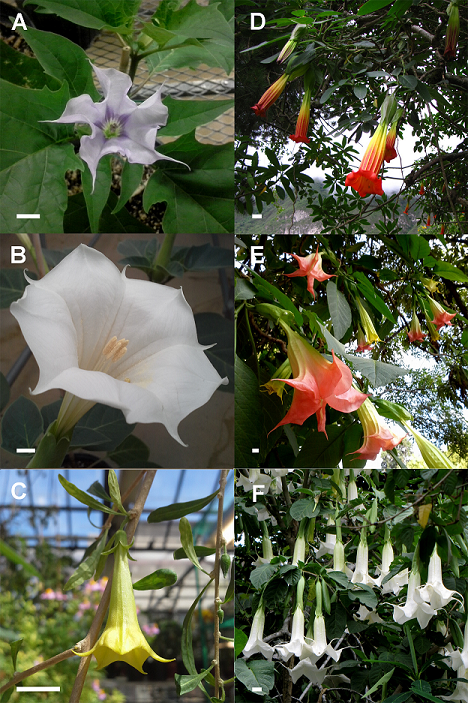
This study presented the first phylogeny of the tribe that includes all accepted species to date. This phylogeny was estimated using nuclear markers, which have been useful in increasing the resolution of other clades within Solanaceae. As part of this study, we also reconstructed the history of morphological characters used to delimit genera in the tribe, such as flower position and size, and fruit type. The patterns of character evolution were largely consistent with the phylogeny, meaning that only minimal taxonomic changes were needed. Specifically, we reassigned a species that was currently placed in a different tribe within Solanaceae to Datureae and elevated it to its own genus - Trompettia J. Dupin.
Datureae environmental niche evolution
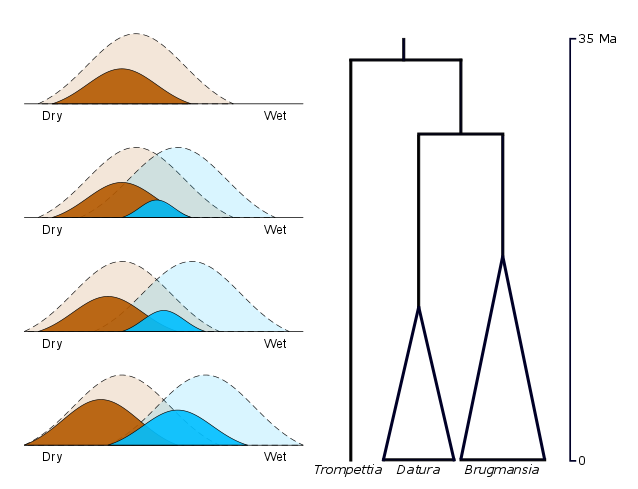
We integrated historical and environmental factors to create a more detailed picture of how this clade colonized different parts of the Americas. Our results suggest that Datureae originated in Andean regions and subsequently expanded its range to North America and non-Andean regions. Moreover, I estimated that the ancestral environmental niche in the tribe is dry and that there has been a significant shift along the Brugmansia branch towards a more mesic type of environment. The long-distance dispersal to North America represented a range expansion into a familiar type of environment, a dry one. Even though range expansions ultimately resulted in a significant niche shift, our niche overlap estimates showed moderate overlap remains between Datura and Brugmansia niche regions. This is likely a result of as yet incomplete niche specialization within Brugmansia and two Datura species.
Fruit anatomy in Datureae
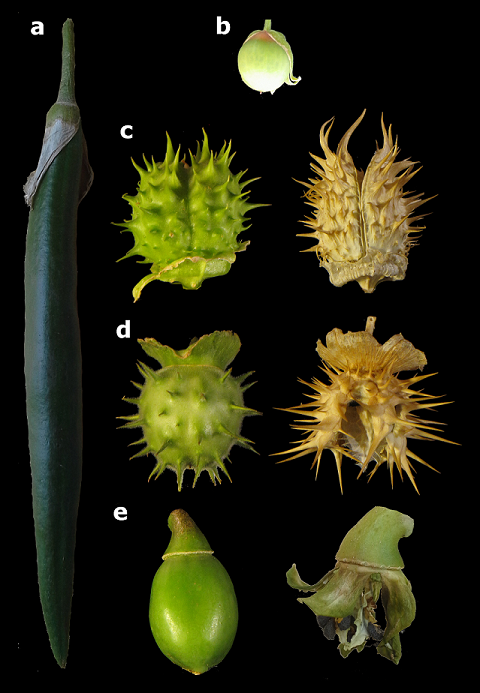
We explored the anatomical differences between fleshy and dry fruits in the group, with special attention to the transition to the family’s ancestral fruit state observed in one of the genera in the tribe (Datura). In addition to comparing the anatomical features of fleshy and dry fruits in the tribe, we explored the characters that could explain the different dehiscence mechanisms within species in Datura, including biomechanical tests of regular and irregularly dehisced fruits. Lastly, we placed these results into phylogenetic context to determine if the transition between berries and regularly dehisced capsules was a stepwise process, given the number of traits likely required for a dry fruit (e.g., creating dehiscence zones, opening to release seeds). We found that, while capsules and berries in Datureae are functionally different, there are overlapping anatomical characters between the two types of fruit. We also found that the vascular tissue is likely a major player in the dehiscence mechanism in Datura, in contrast to the mechanism seen in other genera with capsules in Solanaceae. These results demonstrated then the relevance of phylogenetic context when discussing the evolution of characters, and indicate that multiple mechanisms for the development of capsules exist within Solanaceae.